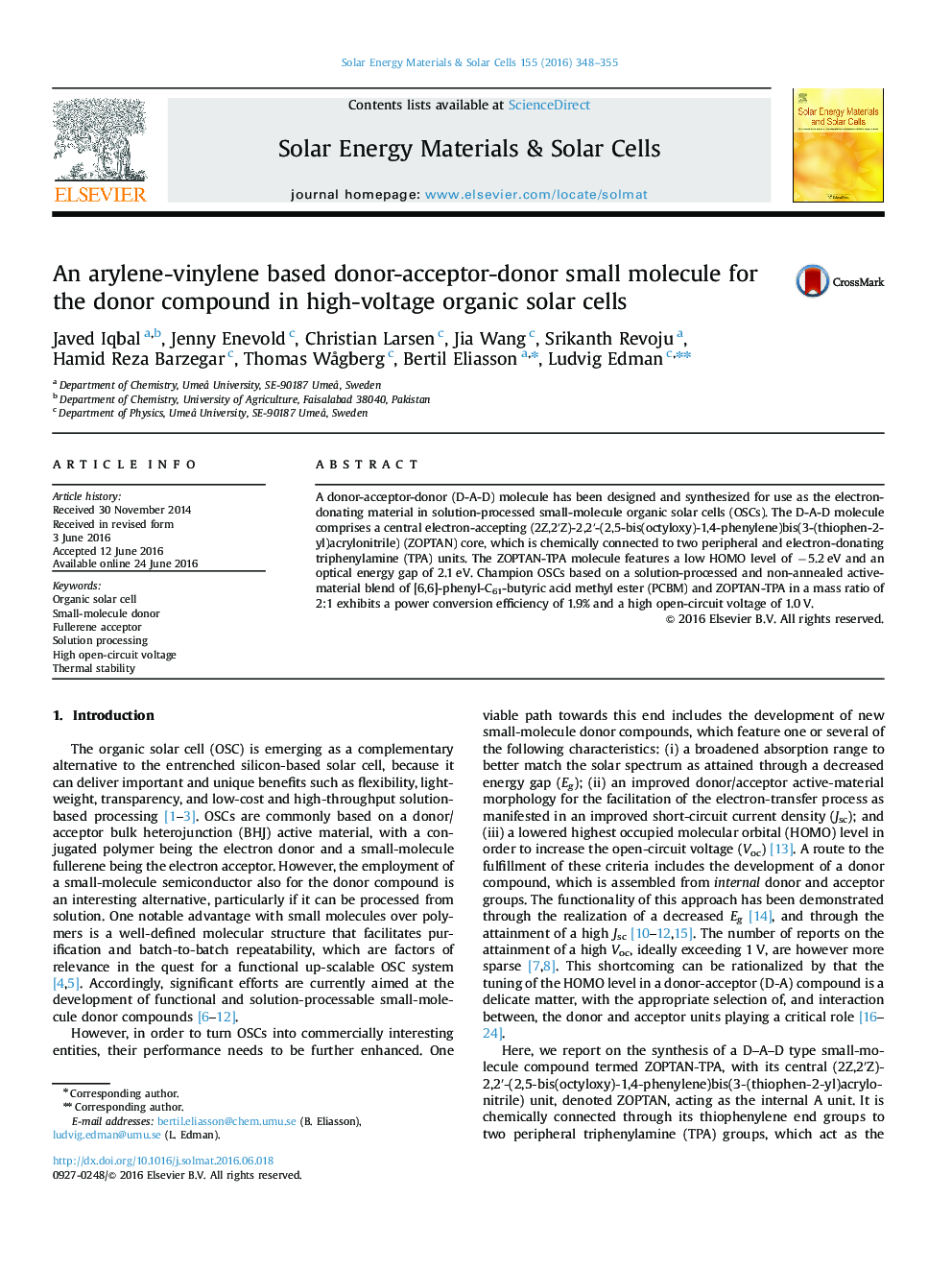| کد مقاله | کد نشریه | سال انتشار | مقاله انگلیسی | نسخه تمام متن |
|---|---|---|---|---|
| 77521 | 49283 | 2016 | 8 صفحه PDF | دانلود رایگان |
• A soluble and easy-to-purify donor-acceptor-donor molecule was designed and synthesized.
• The molecule features a low HOMO, which translates into a high-voltage of >1 V in solar cells.
• The propensity of the molecule to crystallize makes annealing for improved performance difficult.
A donor-acceptor-donor (D-A-D) molecule has been designed and synthesized for use as the electron-donating material in solution-processed small-molecule organic solar cells (OSCs). The D-A-D molecule comprises a central electron-accepting (2Z,2′Z)-2,2′-(2,5-bis(octyloxy)-1,4-phenylene)bis(3-(thiophen-2-yl)acrylonitrile) (ZOPTAN) core, which is chemically connected to two peripheral and electron-donating triphenylamine (TPA) units. The ZOPTAN-TPA molecule features a low HOMO level of −5.2 eV and an optical energy gap of 2.1 eV. Champion OSCs based on a solution-processed and non-annealed active-material blend of [6,6]-phenyl-C61-butyric acid methyl ester (PCBM) and ZOPTAN-TPA in a mass ratio of 2:1 exhibits a power conversion efficiency of 1.9% and a high open-circuit voltage of 1.0 V.
Figure optionsDownload as PowerPoint slide
Journal: Solar Energy Materials and Solar Cells - Volume 155, October 2016, Pages 348–355
